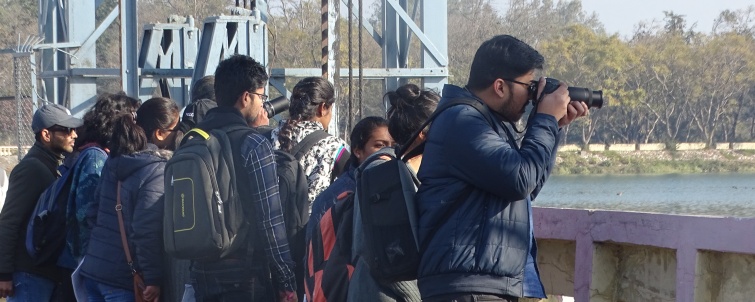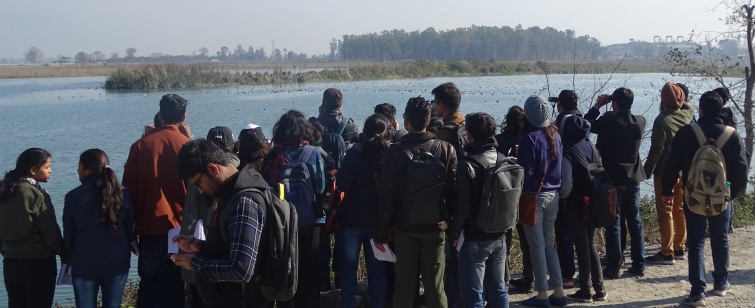Field excursion at Asan Wetland Conservation Reserve, Uttarakhand
Situated at the confluence of the rivers Yamuna and Asan, the Asan Wetland Conservation Reserve (AWCR) forms an important transition zone between riverine and forest ecosystems. Located at the valley of Shiwaliks, the picturesque landscape depicting all the successional stages of wetland ecology was India’s first Conservation Reserve in the state of Uttarakhand, India which was declared in 2005.
As a part of the M.Sc. programme at Forest Research Institute (Deemed to be University), Dehradun, the students of Forestry (2017-19) were taken to field excursion cum training programme at AWCR on 10th February, 2018. The trip was aimed to understand wetland ecology with special reference to avian and plant diversity which was guided by faculties, Mr. Anurag Vishwakarma, Wildlife Institute of India, Dehradun and Dr. Amit Kumar, Forest Research Institute (Deemed to be University), Dehradun. This ecotone presents the pioneer reed-swamp stage to the climax Sal (Shorea robusta) forest stage quite clearly. The barrage is an excellent habitat to a variety of bird species. Aquatic, partially aquatic, local, altitudinal and continental migratory birds could be seen in and around the CR. Eurasian Wigeon, Northern Pintail, Common coot, Ruddy shelduck, White browed wagtail, Northern shoveler, Mallard, Moorhen, Little grebe, Purple heron, Sandpiper, White capped red start, Dusky crag martin, Swift and Cormorant were few among the many species spotted. Among the terrestrial plant species, Bombax ceiba (Semal), Butea monosperma (Palash) and trees alike provide roosting sites and a good home to the raptors. Trewia nudiflora, keystone figs, Dalbergia sissoo and Holoptelia integrifolia were among the other important species of the area.



